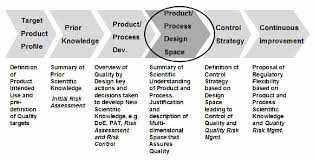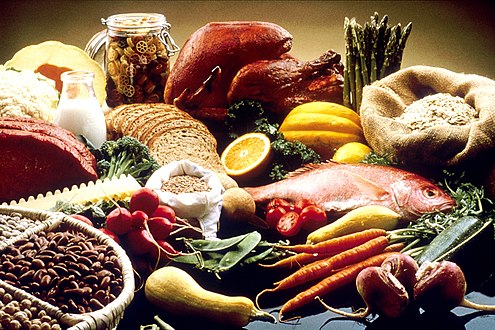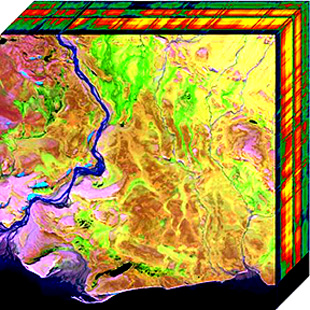|
Process Analytical Technology, PAT - BioPharmaTechnology
PAT / Spatially Resolved Spectroscopy / Raman Spectroscopy / Hyperspectral Imaging / UV/VIS / NIR Synthesis / Clean-In-Place / Suspended Solids / Dissolution Testing / Residual solvent / Purity / Cell Density Plating Density / Glycosylation / In-Line Acceptance / Uniformity / Solvent Recycling
   

    
Bio-Technology Raw Materials and Consumables from Taiwan
Knowledge Bases :
I. Process analytical technology (PAT)II. Industrial processesIII. PAT tools
Spatially Resolved Spectroscopy
Raman Spectroscopy
Hyperspectral Imaging
UV/VIS
NIRApplications :
IV. PharmaceuticalV. Biotechnology VI. Food / AgricultureVII. Chemical
I. Process Analytical Technology, PAT

The long-term goals of PAT are to: reduce production cycling time, prevent rejection of batches, enable real time release, increase automation and control, improve energy and material use, facilitate continuous processing.
|
Process analytical technology (PAT) has been defined by the United States Food and Drug Administration (FDA) as a mechanism to design, analyze, and control pharmaceutical manufacturing processes through the measurement of critical process parameters (CPP) which affect critical
quality attributes (CQA).
The concept actually aims at understanding the processes by defining their CPPs, and accordingly monitoring them in a timely manner (preferably in-line or on-line) and thus being more efficient in testing while at the same time reducing over-processing, enhancing consistency and minimizing rejects.
|
II. Industrial Processes

The long-term goals of PAT are to: reduce production cycling time, prevent rejection of batches, enable real time release, increase automation and control, improve energy and material use, facilitate continuous processing.
|
Industrial processes are
procedures involving chemical, physical, electrical or mechanical steps
to aid in the manufacturing of an item or items, usually carried out on a very large scale. Industrial processes are the key components of heavy industry..
Chemical processes by main basic materialCertain chemical process yield important basic materials for society, e.g., (cement, steel, aluminum,
and fertilizer).
However, these chemical reactions contribute to climate change by
emitting carbon dioxide,
a greenhouse gas,
through chemical reactions, as well as through the combustion of fossil fuels to
generate the high temperatures needed to reach the activation energies of
the chemical reactions.
|
III. PAT tools

Fundamental to process analytical technology (PAT) initiatives are the basics of multivariate
analysis (MVDA)
and design of experiments (DoE).
This is because analysis of the process data is a key to understand the process and keep it under multivariate statistical control.
|
PAT tools
In order to implement a successful PAT project, a combination of three main PAT tools is essential:
- Multivariate data acquisition and data analysis tools: usually advanced software packages which aid in design of experiments, collection of raw data and statistically analyzing this data in order to determine what parameters are CPP.
- Process analytical chemistry (PAC) tools: in-line and on-line analytical instruments used to measure those parameters that have been defined as CPP. These include mainly near infrared spectroscopy (NIRS); but also include biosensors, Raman spectroscopy, fiber
optics and others.
- Continuous improvement and/or knowledge management tools: paper systems or software packages which accumulate Quality Control data acquired over time for specific processes with the aim of defining process weaknesses and implementing and monitoring process improvement initiatives. These products may be the same or separated from the statistical analysis tools above.
|

Intensity distribution of the diffused light when one select only the part coming out in reflection at a distance from the source.
|
Spatially offset Raman spectroscopy (SORS) is a
variant of Raman
spectroscopy that allows highly accurate chemical analysis of objects beneath obscuring surfaces, such as tissue, coatings and bottles. Examples of uses include analysis of: bone beneath skin,tablets inside plastic bottles,explosives inside containers[4] and
counterfeit tablets inside blister packs. There have also been advancements in the development of deep non-invasive medical diagnosis using SORS with the hopes of being able to detect breast tumors.
|

Energy-level diagram showing the states involved in Raman spectra.
|
Raman spectroscopy (); (named after Indian physicist C. V. Raman) is a spectroscopic technique
typically used to determine vibrational modes of molecules, although rotational and other low-frequency modes of systems may also be observed. Raman spectroscopy is commonly used in chemistry to provide a structural fingerprint by which molecules can be identified.
Raman spectroscopy relies upon inelastic scattering of photons, known as Raman scattering. A source of monochromatic light, usually from a laser in the visible, near
infrared, or near ultraviolet range is used, although X-rays can also be used. The laser light interacts with molecular vibrations, phonons or other excitations in the system, resulting in the energy of the laser photons being shifted up or down. The shift in energy gives information about the vibrational modes in the system. Infrared
spectroscopy typically yields similar yet complementary information.
|

Two-dimensional projection of a hyperspectral cube
|
Hyperspectral imaging,
like other spectral imaging,
collects and processes information from across the electromagnetic spectrum.[1] The
goal of hyperspectral imaging is to obtain the spectrum for each pixel in the image of a scene, with the purpose of finding objects, identifying materials, or detecting processes. There
are three general branches of spectral imagers. There are push broom scanners and
the related whisk broom scanners (spatial
scanning), which read images over time, band sequential scanners (spectral scanning), which acquire images of an area at different wavelengths, and snapshot hyperspectral imaging,
which uses a staring array to
generate an image in an instant.
|
IV. Pharmaceutical

The pharmaceutical
industry discovers,
develops, produces, and markets drugs or
pharmaceutical drugs for use as medications to
be administered to patients (or
self-administered), with the aim to cure them, vaccinate them,
or alleviate symptoms.[1][2] Pharmaceutical
companies may
deal in generic or brand medications
and medical devices. They are subject to a variety of laws and
regulations that govern the patenting, testing, safety, efficacy and marketing
of drugs. The global pharmaceuticals market produced treatments worth $1,228.45 billion in 2020 and showed a compound annual growth rate (CAGR) of 1.8%.
|
Synthesis
Concentration
Crystallization
Clean-In-Place
Suspended Solids
Dissolution Testing
Residual solvent
Purity
|
V. Biotechnology
VI. Food / Agriculture

Food is
any substance consumed to provide nutritional support
for an organism.
Food is usually of plant, animal,
or fungal origin,
and contains essential nutrients,
such as carbohydrates, fats, proteins, vitamins,
or minerals.
The substance is ingested by
an organism and
assimilated by the organism's cells to
provide energy,
maintain life, or stimulate growth. |
In-Line Acceptance
Uniformity
Color Quality Scale (CQS)
Clean-In-Place |
VII. Chemical
Key Words : #PAT #Spectroscopy #Spatially #Raman #HyperSpectralImaging #UV/VIS #NIR #Pharmaceutical #Synthesis #Crystallization #Clean-In-Place #Suspension #Dissolution #ResidualSolvent #Purity #Biotechnology #CellCulture #CellDensity #Food #Agriculture #In-Line Acceptance #Uniformity #CQS #Humidity (Moisture)
|